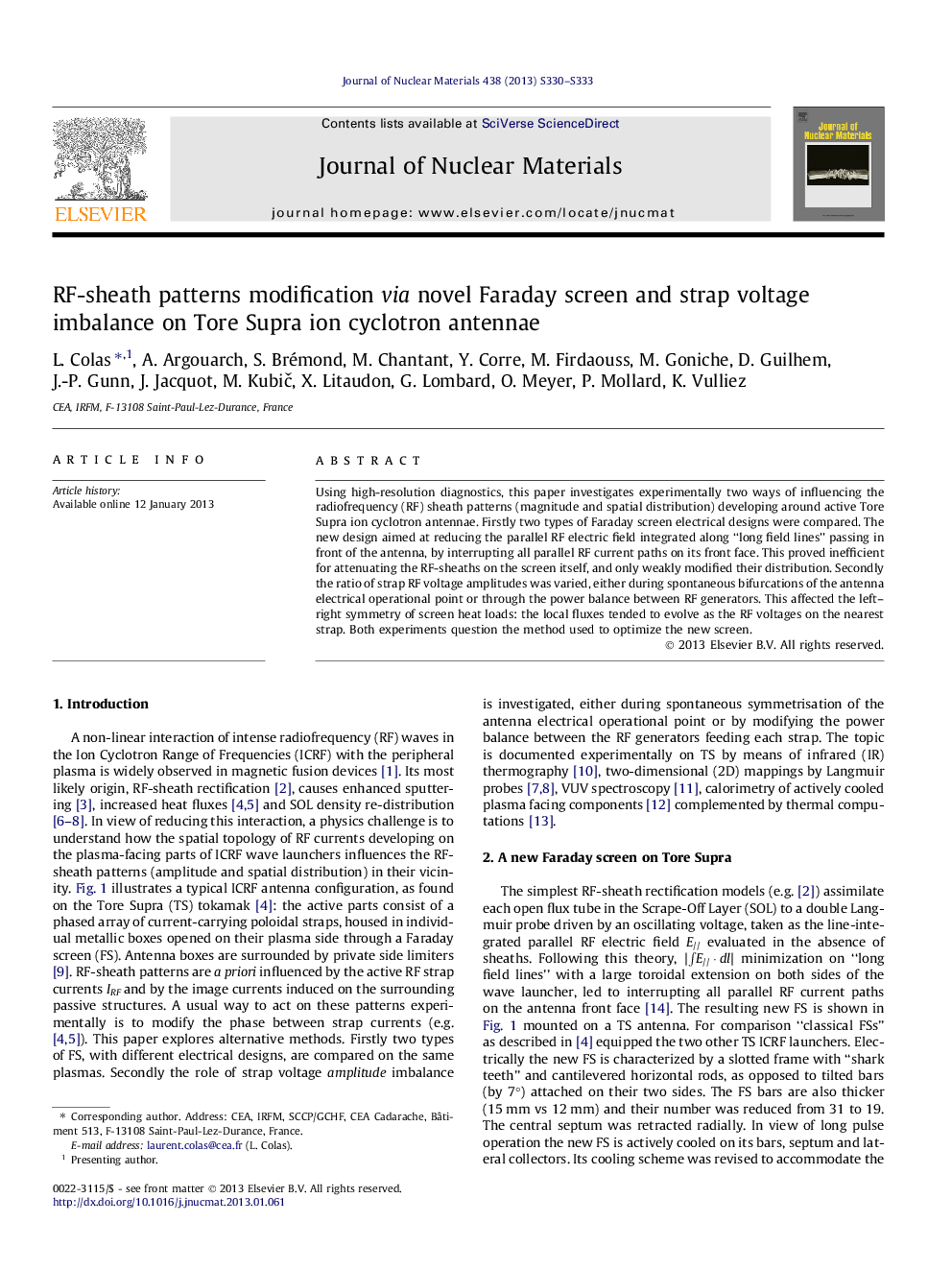| Article ID | Journal | Published Year | Pages | File Type |
|---|---|---|---|---|
| 10645003 | Journal of Nuclear Materials | 2013 | 4 Pages |
Abstract
Using high-resolution diagnostics, this paper investigates experimentally two ways of influencing the radiofrequency (RF) sheath patterns (magnitude and spatial distribution) developing around active Tore Supra ion cyclotron antennae. Firstly two types of Faraday screen electrical designs were compared. The new design aimed at reducing the parallel RF electric field integrated along “long field lines” passing in front of the antenna, by interrupting all parallel RF current paths on its front face. This proved inefficient for attenuating the RF-sheaths on the screen itself, and only weakly modified their distribution. Secondly the ratio of strap RF voltage amplitudes was varied, either during spontaneous bifurcations of the antenna electrical operational point or through the power balance between RF generators. This affected the left-right symmetry of screen heat loads: the local fluxes tended to evolve as the RF voltages on the nearest strap. Both experiments question the method used to optimize the new screen.
Related Topics
Physical Sciences and Engineering
Energy
Nuclear Energy and Engineering
Authors
L. Colas, A. Argouarch, S. Brémond, M. Chantant, Y. Corre, M. Firdaouss, M. Goniche, D. Guilhem, J.-P. Gunn, J. Jacquot, M. KubiÄ, X. Litaudon, G. Lombard, O. Meyer, P. Mollard, K. Vulliez,
